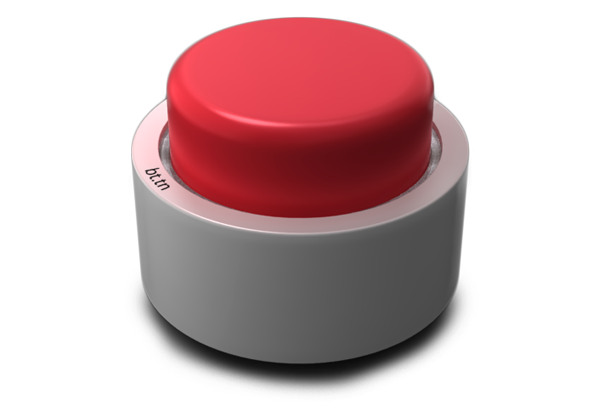The Single Button Theory of Usability
Dig deep, it’s in there. Don’t give up. The commands to control many smart home appliances are a few levels down, and to the right. Simply unlock your phone, locate and open the proper app, find the desired function, and click. In this Rube Goldberg-like world, simplicity is making room for complexity. The clear and obvious is being replaced by learning curves and multifunctional operations.
It’s refreshing, then, to see product developers recognise the paradox of devices that have the potential to simplify lives but instead present users with a maze of challenges and choices. In cars, homes and phones, the classic big button theory is being replaced by layers and sub-layers. This in turn is creating an opportunity in the market for buttons. Next year may well be the year of the single-button theory.
A product called Flic promises to slice through many functional layers to get directly to the point. It’s a simple, wireless, rubberised button that can be programmed to perform single smart functions such as turning on a smart bulb, taking a photo, playing music or calling a cab. Flic uses Bluetooth Low Energy to communicate with Bluetooth 4.0 compatible iOS and Android devices and hubs allowing users to perform single functions at the touch of these buttons. Prices start at $27 for one Flic and the start-up behind the product offers significant discounts for larger volumes. The company envisions homes and cars filled with Flics once the product starts shipping during the first quarter of 2015.
Another single-purpose control device comes from a Finnish start-up called Bttn. The eponymously named bttn can be programmed using the simple IFTTT programming interface to perform tasks such as sending simple messages or turning on a particular connected product. The bttn uses Wi-Fi to communicate to a cloud-based service via the local network.
A similarly named product called V.Bttn from a company called VSN Mobil is intended to be used a wearable, but the concept is the same. Like other programmable buttons, each V.Bttn can be set up to perform simple tasks and many functions can be downloaded as small apps through the iOS and Android app stores.
Many of the user scenarios of these products focus on the elderly and small children. Programmable buttons can be placed on photos of a family member, for example. When pressed, the buttons can call or send a message to that person. Or buttons can be set up to call emergency services. Others can be programmed to allow advanced features of smart home devices to be accessible by less tech-savvy users.
Philips released a companion product to its Hue line of smart light bulbs called the Hue tap. This allows users to bypass the need for a smartphone or tablet to turn on a light in the room. It’s product irony in a box, in that it acts as an old-fashioned wall switch, cutting out the need for smart devices to get in the middle. For households that can afford the choice between simplicity and complexity, Philips does offer a choice.
The journey to create smarter homes is presenting some challenges to mainstream users. Tech enthusiasts and early adopters might thrive in this environment, but driving adoption further will need some more thinking about usability. Self-learning gadgets such as Nest thermostats and the BeON smart bulb and listening devices such as Ubi and Jibo (see Talk It Up: Voice UI Is in the House) offer partial solutions. The design of everyday things for the smart home is becoming a pressing issue.


 Twitter
Twitter
 Facebook
Facebook
 LinkedIn
LinkedIn
 Email
Email